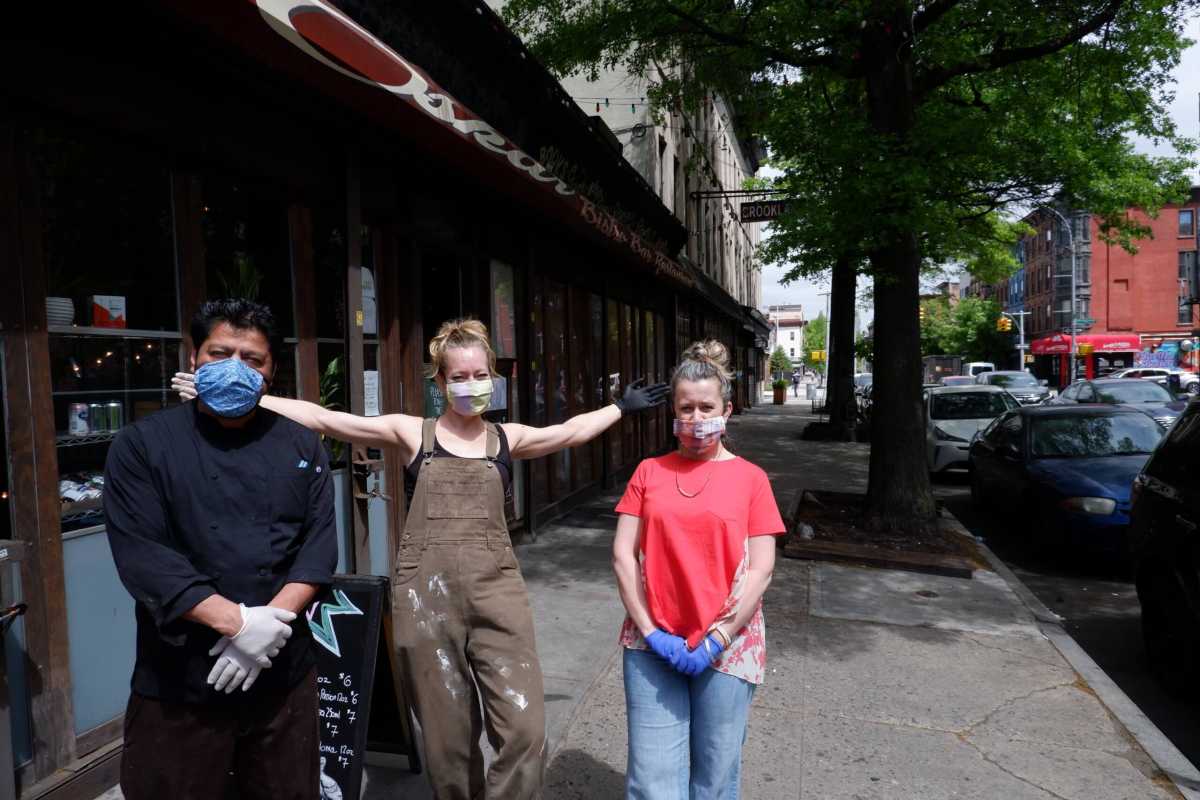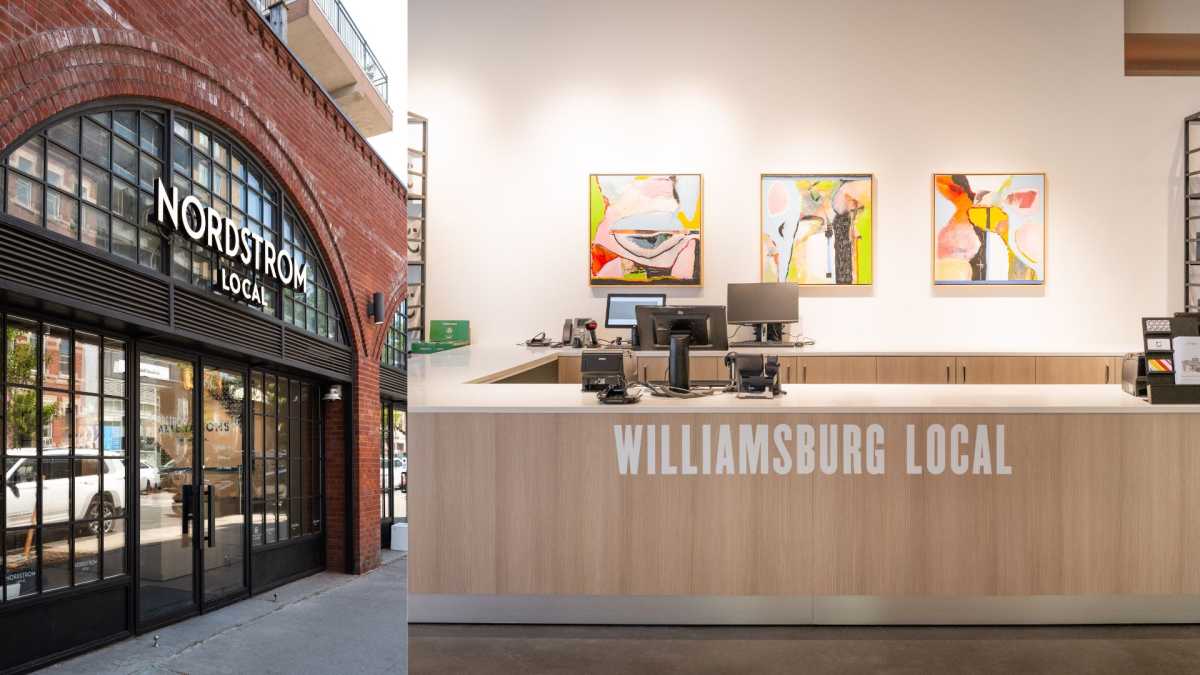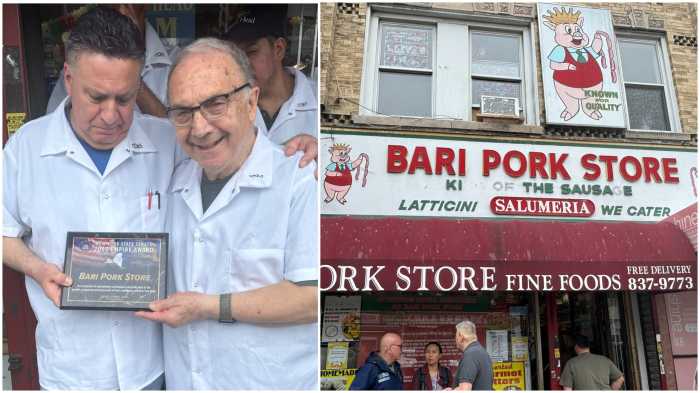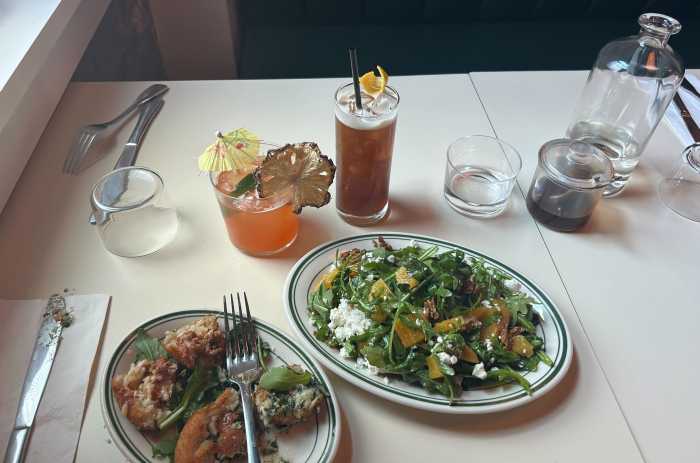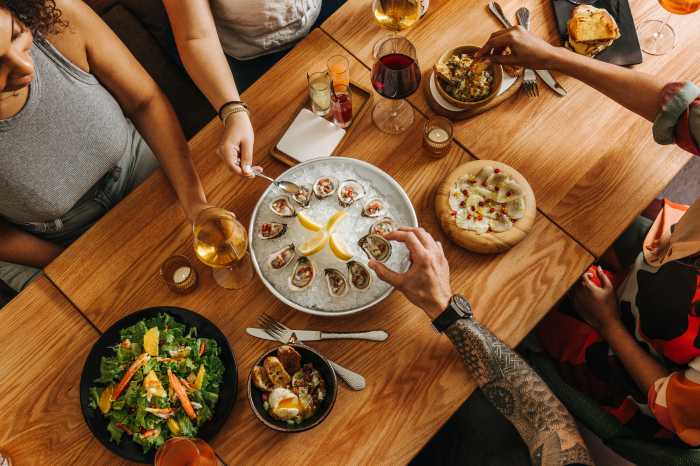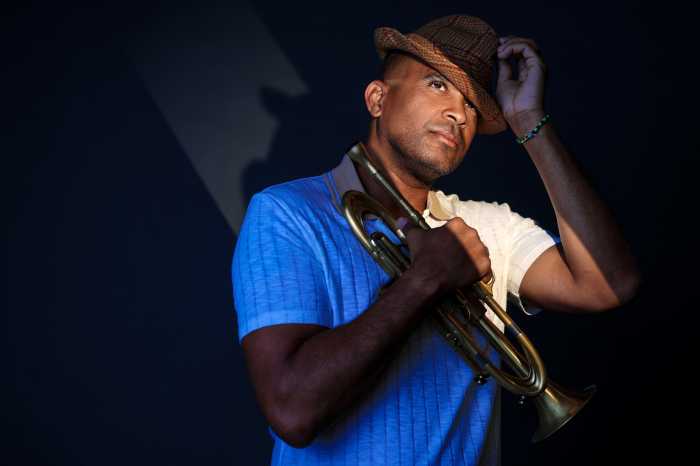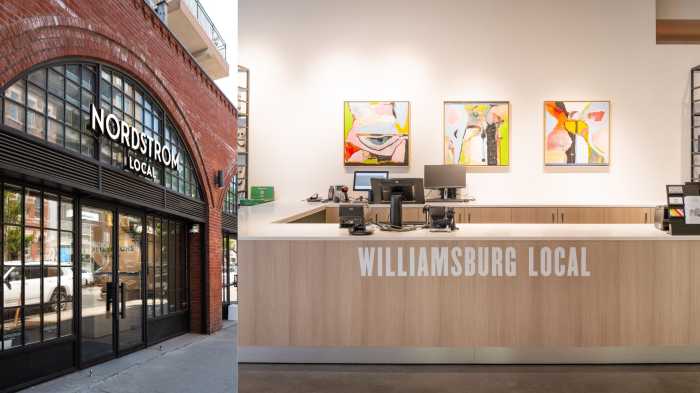Ever since coronavirus-related restrictions forced restaurateur Charlotta Janssen to limit operations to takeout and delivery at her French bistro Chez Oskar in Bedford-Stuyvesant, business has been tough to maintain.
Like so many other eateries, customers have become scarcer as Brooklynites shelter indoors, and many find themselves newly strapped for cash.
Recently, though, Janssen has joined the growing chorus of those pushing an increasingly popular initiative that could provide locals a safe return to the table-side service industry, and throw a lifeline to boutique restaurants like hers: transforming streets and sidewalks into outdoor dining areas.
“What upsets me about the narrative is that it’s ‘businesses or lives,’” Janssen said. “But we think it can be ‘business and lives’ if it’s done in a safe way.”
Her eatery at Malcolm X Boulevard near Decatur Street typically relies on the revenue from the busy summer months to make it through the quieter winter stretch, said Janssen, who worried her business will collapse if she can’t start serving more customers again.
“If we don’t get the summer, we won’t survive the winter,” she said.
Other cities around the country and beyond have already started similar moves to give businesses more leeway for al-fresco dining.
The idea even has life here in New York, where land-use regulations are typically stringent and slow to change, as Mayor Bill de Blasio said he was “intrigued” by the idea. Department of Transportation Commissioner Polly Trottenberg told the Council that the city is examining it, according to Gothamist.
“It’s a very appealing idea,” Mayor Bill de Blasio said during an appearance on NY1 on May 18. “I’m very intrigued — the idea of using outdoor space more, we have to find out the formula to do it safely.”
One cafe owner said this would provide an opportunity for cooped up locals to safely get some fresh air, while patronizing struggling businesses and helping restore the shattered economy.
“Once you’re eating outside, people have a sense of fresh air and they don’t feel clustered in and fear of their neighbor next to them,” said Jesus Caicedo, the owner of Skål, a Danish-inspired cafe on Lewis Avenue.
The coffee shop at Macon Street already has some outdoor seating fronting the building, but having more space on the sidewalk and parking spaces would allow Caicedo to move all his customers outside, while keeping the indoors for his staff to work at a safe distance.
“Keep the inside for employees and avoid contact and interaction, I think that would be safer for all involved,” he said.
Currently, restaurants face varying levels of red tape to use part of a sidewalk for seating. If the area’s zoning allows for it, they have to get a permit from the Department of Consumer Affairs, along with the go-ahead from the State Liquor Authority if they want to serve booze.
Borough President Eric Adams recently penned a letter to de Blasio, asking him to issue an executive order to allow restaurants to temporarily put seating on sidewalks, in street-side parking areas, and bike lane-adjacent parking spots — provided it can be done in a way that’s consistent with current permits for sidewalk seating but with six feet apart, and regardless of zoning designations.
The beep urged for the measure immediately lasting until at least mid-October, which he said would help stem the “urgent crisis” facing struggling businesses.
“I am writing regarding the urgent crisis being experienced by those whose livelihoods depend on the solvency of New York City’s eating and drinking establishments,” Adams wrote on May 15. “I urge you to issue an immediate Executive Order that allows all such establishments to bring outside seating to adjoining sidewalks and curbside parking lanes.”
Adams’ proposed order would provide a quickly-deployable, widely expanded version of the so-called Street Seats program from the Department of Transportation, where businesses can use sidewalk or parking spaces after also going through a multi-month process.
Adams’s Manhattan counterpart, Gale Brewer, has also called on city transit gurus to cut the red tape and rapidly expand that program, Streetsblog reported.
Likewise, former Mayor Michael Bloomberg’s philanthropic organization helped put together a “Streets for Pandemic Response and Recovery” plan — which includes plans for transforming space previously demarcated for cars into pedestrianized plazas.
But it’s not just space for outdoor eating that could result from the pandemic.
Alternative transportation activists and some progressive politicians are appealing to de Blasio to also provide more street space for pedestrians and bicyclists — which would help locals avoid crowding in the city’s parks and on public transportation.
Hizzoner has been rolling out his Open Streets program piecemeal across the city, but vast parts of Brooklyn, such as the borough’s entire southern half, have seen few streets closed to cars so far.
Caicedo argued that now is the time to give residents in dense neighborhoods more space which could have lasting changes even beyond the pandemic.
“Usually people don’t think of Bed-Stuy when they think of outdoor seating, they think of it more in Fort Greene or the West Village,” he said. “If we get accustomed to it, it would become normal and it could be beneficial for the community, businesses, and the people. I think it would be divine.”


